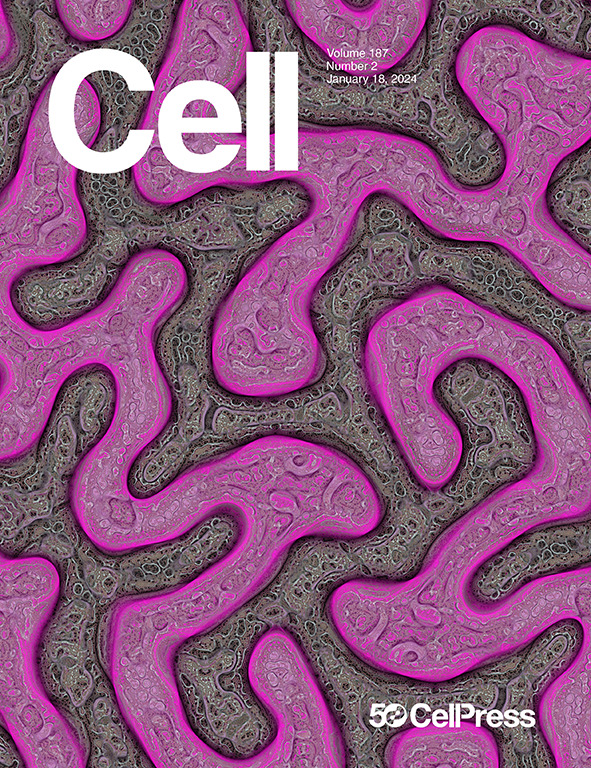Extrachromosomal DNA replication and maintenance couple with DNA damage pathway in tumors
IF 45.5
1区 生物学
Q1 BIOCHEMISTRY & MOLECULAR BIOLOGY
引用次数: 0
Abstract
Extrachromosomal DNA (ecDNA) drives the evolution of cancer cells. However, the functional significance of ecDNA and the molecular components involved in its replication and maintenance remain largely unknown. Here, using CRISPR-C technology, we generated ecDNA-carrying (ecDNA+) cell models. By leveraging these models alongside other well-established systems, we demonstrated that ecDNA can replicate and be maintained in ecDNA+ cells. The replication of ecDNA activates the ataxia telangiectasia mutated (ATM)-mediated DNA damage response (DDR) pathway. Topoisomerases, such as TOP1 and TOP2B, play a role in ecDNA replication-induced DNA double-strand breaks (DSBs). A subset of these elevated DSBs persists into the mitotic phase and is primarily repaired by the alternative non-homologous end joining (alt-NHEJ) pathway, which involves POLθ and LIG3. Correspondingly, ecDNA maintenance requires DDR, and inhibiting DDR impairs the circularization of ecDNA. In summary, we demonstrate reciprocal interactions between ecDNA maintenance and DDR, providing new insights into the detection and treatment of ecDNA+ tumors.

肿瘤中染色体外DNA复制和维持与DNA损伤通路的耦合
染色体外DNA (ecDNA)驱动癌细胞的进化。然而,ecDNA的功能意义及其参与其复制和维持的分子成分在很大程度上仍然未知。在这里,我们使用CRISPR-C技术,生成了携带ecDNA (ecDNA+)的细胞模型。通过利用这些模型和其他成熟的系统,我们证明了ecDNA可以在ecDNA+细胞中复制和维持。ecDNA的复制激活共济失调毛细血管扩张突变(ATM)介导的DNA损伤反应(DDR)途径。拓扑异构酶,如TOP1和TOP2B,在ecDNA复制诱导的DNA双链断裂(DSBs)中发挥作用。这些升高的dsb的一个子集持续进入有丝分裂期,并主要通过选择性非同源末端连接(alt-NHEJ)途径修复,该途径涉及POLθ和LIG3。相应地,ecDNA的维持需要DDR,抑制DDR会损害ecDNA的循环。总之,我们证明了ecDNA维持和DDR之间的相互作用,为ecDNA+肿瘤的检测和治疗提供了新的见解。
本文章由计算机程序翻译,如有差异,请以英文原文为准。
求助全文
约1分钟内获得全文
求助全文
来源期刊

Cell
生物-生化与分子生物学
CiteScore
110.00
自引率
0.80%
发文量
396
审稿时长
2 months
期刊介绍:
Cells is an international, peer-reviewed, open access journal that focuses on cell biology, molecular biology, and biophysics. It is affiliated with several societies, including the Spanish Society for Biochemistry and Molecular Biology (SEBBM), Nordic Autophagy Society (NAS), Spanish Society of Hematology and Hemotherapy (SEHH), and Society for Regenerative Medicine (Russian Federation) (RPO).
The journal publishes research findings of significant importance in various areas of experimental biology, such as cell biology, molecular biology, neuroscience, immunology, virology, microbiology, cancer, human genetics, systems biology, signaling, and disease mechanisms and therapeutics. The primary criterion for considering papers is whether the results contribute to significant conceptual advances or raise thought-provoking questions and hypotheses related to interesting and important biological inquiries.
In addition to primary research articles presented in four formats, Cells also features review and opinion articles in its "leading edge" section, discussing recent research advancements and topics of interest to its wide readership.
 求助内容:
求助内容: 应助结果提醒方式:
应助结果提醒方式:


